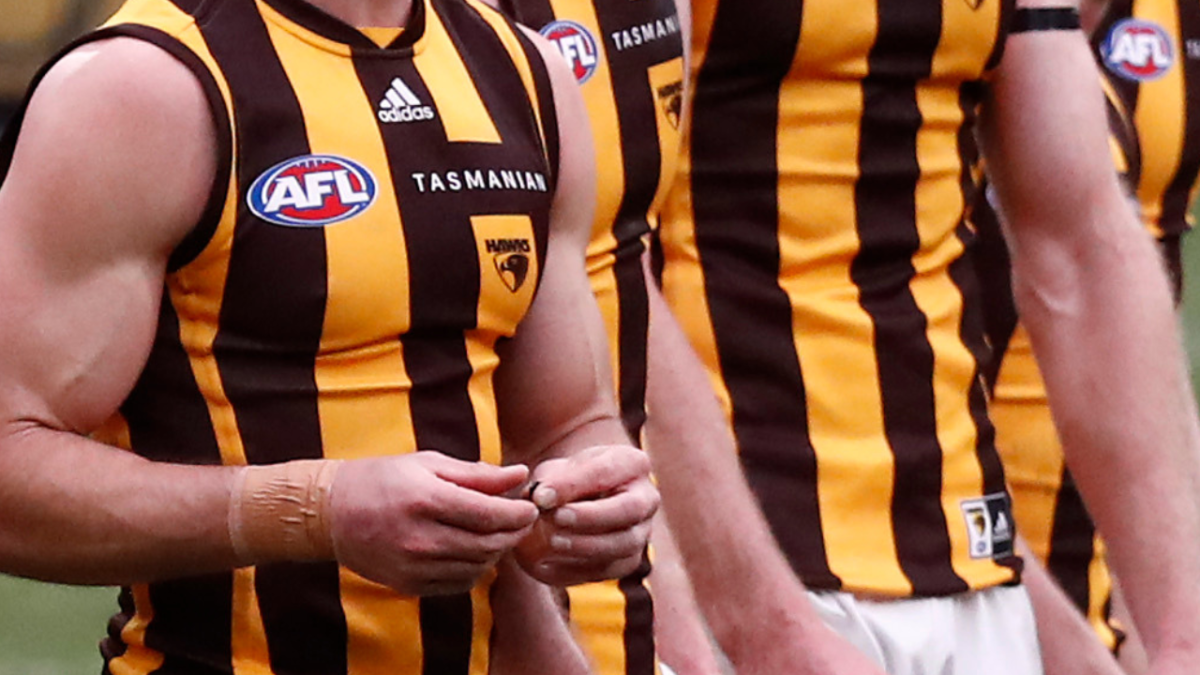
The reprehensible details revealed in the ABC’s explosive investigation into the Hawthorn Football Club’s treatment of First Nations players makes for sickening reading. Per the report, it is alleged that Hawks club officials — including senior coaching staff — stood over young Indigenous players, forcing them to separate from their families and, in a particularly sickening example, urged them to terminate a pregnancy.
It’s an extreme and galling string of allegations of horrific and systemic racism that is now looming over a club that has a documented and extensive problem with its treatment of Indigenous players — specifically, anecdotal accounts from past players revealed that Hawthorn outright refused to recruit First Nations players up until 1999, and a former club official apparently told a recruiting manager “don’t draft anyone with skin darker than mine”.
Easy it may be, then, to compartmentalise the issues as a club-specific aberration. But the reality of the matter is that it is simply the inevitable end result of a league that has forever seen and presented its First Nations players as different, marginal and less-than.
Through the coded, inherently racist language embedded in the DNA of football folklore, white players of a privileged background are routinely elevated in favour of others from lesser classes. They are the “classy” players, in the eyes of the league and the media presenting them. The leaders, the hard workers, the champions.
Conversely, Indigenous players’ abilities are spoken of as “magic,” “silky,” or “mercurial.” They are naturally gifted, blessed with talent of unknown, perhaps even “mystic” origin. They are cult figures, whose popularity is some form of statistical outlier rather than adulation earned.
Those who succeed are never thought of as having worked hard to get there — their success is pre-ordained. But those who fail are freely held up as lazy, ungrateful, a waste of talent.
Similarly, it is exceedingly rare that First Nations players are viewed as safe bets as far as recruiting goes. More often than not we hear of troubled upbringings and encounters with the law. Remote communities are spoken of in such a way that they seem somehow unregulated or lawless; a world away from the infallible picket-fenced upbringings of suburbia.
They are a risk that clubs take on — a problem to be fixed. Benevolent club officials take in the wayward tearaway and mould them into something the club can be proud of. Time and time again this narrative plays out without so much as a blink. For every Indigenous player that earns his or her place in the AFL, the system burdens them with an asterisk.
It’s this embedded differentiation that puts First Nations players on notice from the moment they enter the league: adapt to our system, or fail as we expect you will.
The Hawthorn scandal, and its ilk, are the end result of this – reprehensible shit imposed on players who deserve (and have earned) support. But instead of that, they are faced with treatment, language, and prejudice that not only holds them to different standards, but lays the bedrock for much, much worse things to occur.



